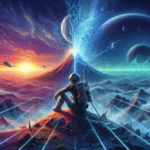Web3 Meets Entertainment: A Seismic Shift on the Horizon
Syndicated by Brego.com
The technological revolution known as Web3 is rapidly reshaping various industries, and the entertainment sector is no exception. Built on the foundations of decentralized technologies like blockchain, cryptocurrencies, and non-fungible tokens (NFTs), Web3 promises to revolutionize the way we create, distribute, and consume entertainment content. However, this disruptive force is not without its controversies and challenges, as it ushers in a seismic shift in power dynamics within the industry.
The Convergence of Web3 and Entertainment
The integration of Web3 technologies into the entertainment industry is already underway, with innovative projects and platforms emerging across various domains. In the realm of gaming, projects like Axie Infinity, Skyweaver, and Guild of Guardians have embraced...
Your Support Drives Innovation. Shop Now, Donate Here.
 |












